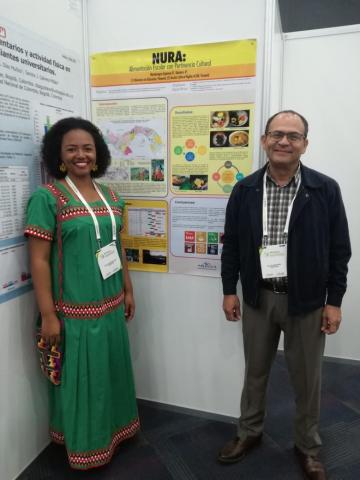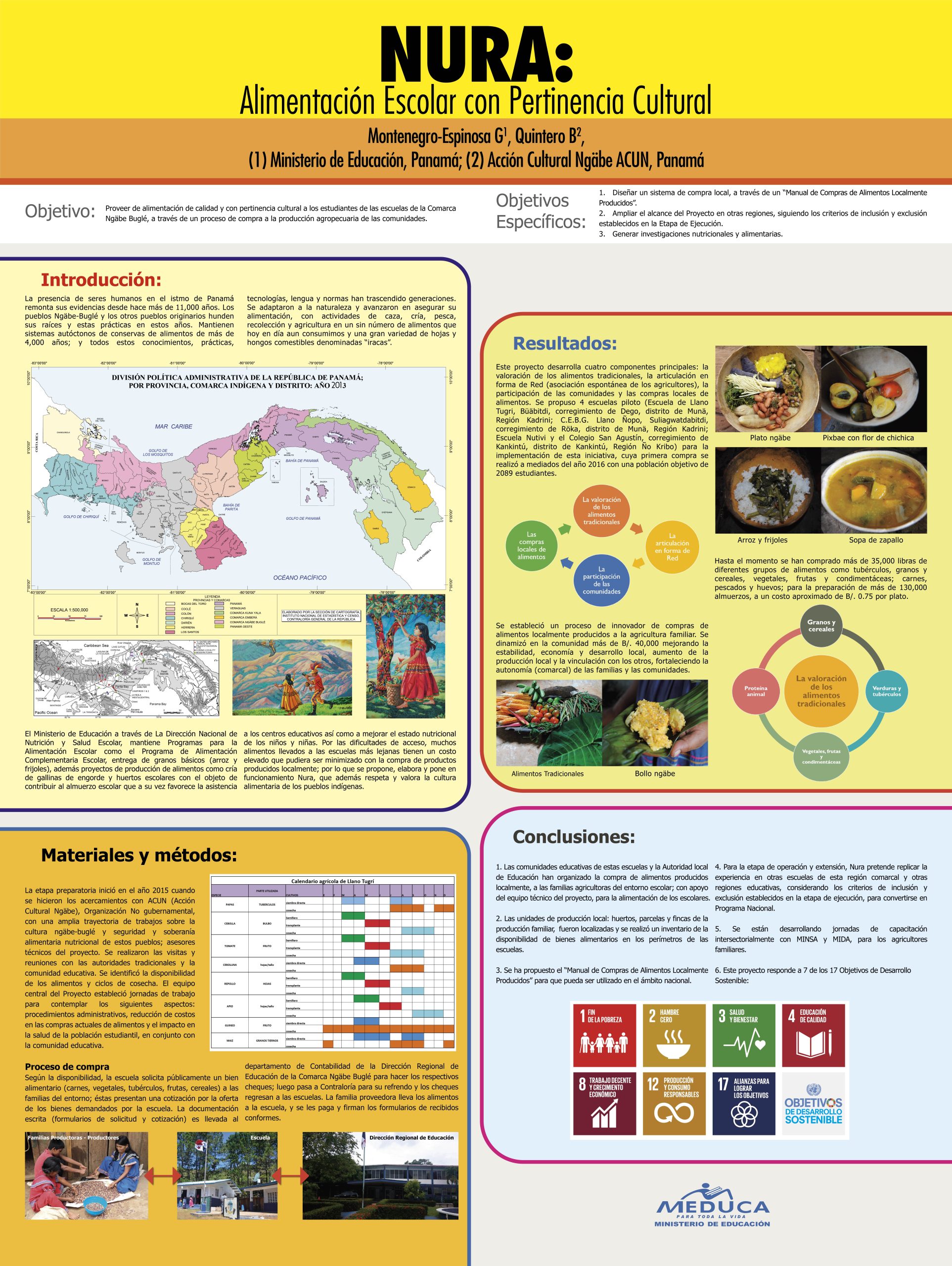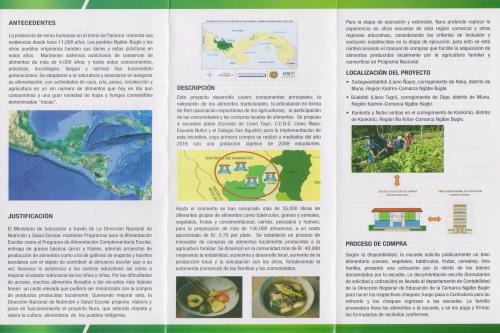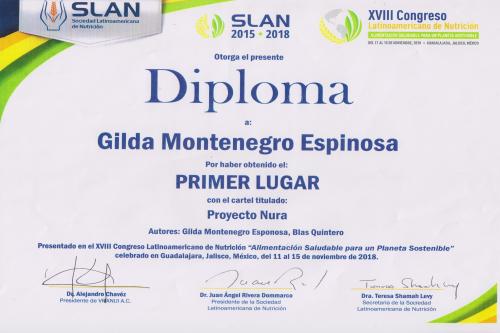
Gilda Montenegro Espinosa, en representación de la Dirección Nacional de Nutrición Escolar del Ministerio de Educación (Meduca), y el antropólogo, Blas Quintero, ganaron el primer lugar del XVIII Congreso Latinoamericano de Nutrición ‘Alimentación Saludable para un Planeta Sostenible’ con el cartel titulado Proyecto Nura. El encuentro fue celebrado en Guadalajara, Jalisco, México.
Montenegro Espinosa explicó que “la experiencia personal adquirida en el congreso como profesional fue muy interesante, pues reunió a profesionales de la nutrición y de la salud en general, y vernos allí como profesionales representando la entidad donde uno trabaja, fue impactante y, más aún, cuando supimos que con nuestro cartel científico era la primera vez que Panamá ganaba este premio, en el que participaron mil 295 carteles de todos los países de América Latina. Una forma también de hacer Patria, especialmente en este mes”.
El objetivo general del Proyecto Nura es proveer de alimentos de calidad y con pertinencia cultural a los estudiantes de las escuelas de la comarca Ngäbe Buglé, a través de un proceso de compra a la producción agropecuaria de las comunidades.
El Proyecto Nura desarrolla cuatro componentes principales: la valoración de los alimentos tradicionales, la articulación en forma de red (asociación espontánea de los agricultores), la participación de las comunidades y las compras locales de alimentos.
Cabe destacar que las cuatro escuelas en las que se implementó este plan piloto son: Suliagwatdabitdi (Llano Ñopo), corregimiento de Roka, distrito de Munä, región Kadrini – comarca Ngäbe Buglé; Büabitdi (Llano Tugrí), corregimiento de Dego, distrito de Munä, región Kadrini. También la escuela de Kankintú y Nutivi ambas en el corregimiento de Kankintú, distrito de Kankintú, región Ño Kribo, todas en la comarca Ngäbe Buglé.
La etapa de operación y extensión, Nura pretende replicar la experiencia en otras escuelas de la región comarcal y otras zonas educativas, al considerar los criterios de inclusión y exclusión establecidos en la etapa de ejecución, para esto está en confección el manual de compras que facilite la adquisición de alimentos producidos localmente por la agricultura familiar y convertirse en programa nacional.
Mientras que, para el antropólogo Quintero, el componente de pertinencia cultural de un proyecto que lleva la Dirección Nacional de Nutrición y Salud escolar del Meduca tiene que ver con una concepción de interculturalidad, es decir, se tiene que abrir otra visión aquí en Panamá, en el que este sea un espacio en que quepan varios mundos y no uno solo.
La presencia de los seres humanos en el istmo se remonta en sus evidencias desde hace 11,000 años. Los pueblos Ngäbe Buglé y otros originarios hunden sus raíces y esta práctica en estos años.
Mantiene sistemas autóctonos de conservas de alimentos de más de 4,000 años, y todos estos conocimientos, prácticas, tecnologías, lengua y normas han trascendido generaciones.
Texto: Nancy Polanco | Fotos: Dirección Nacional de Nutrición y Salud Escolar





